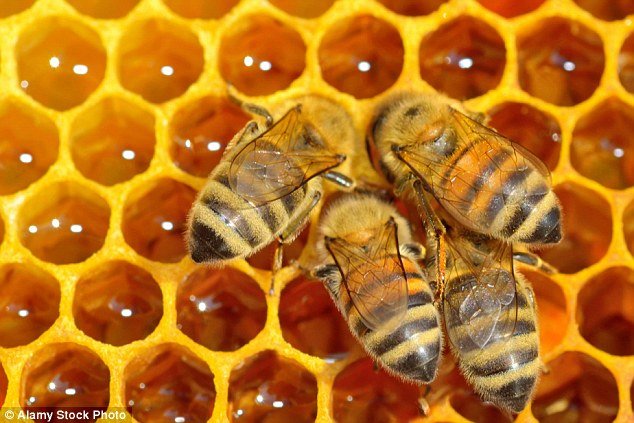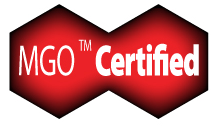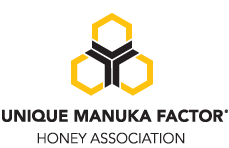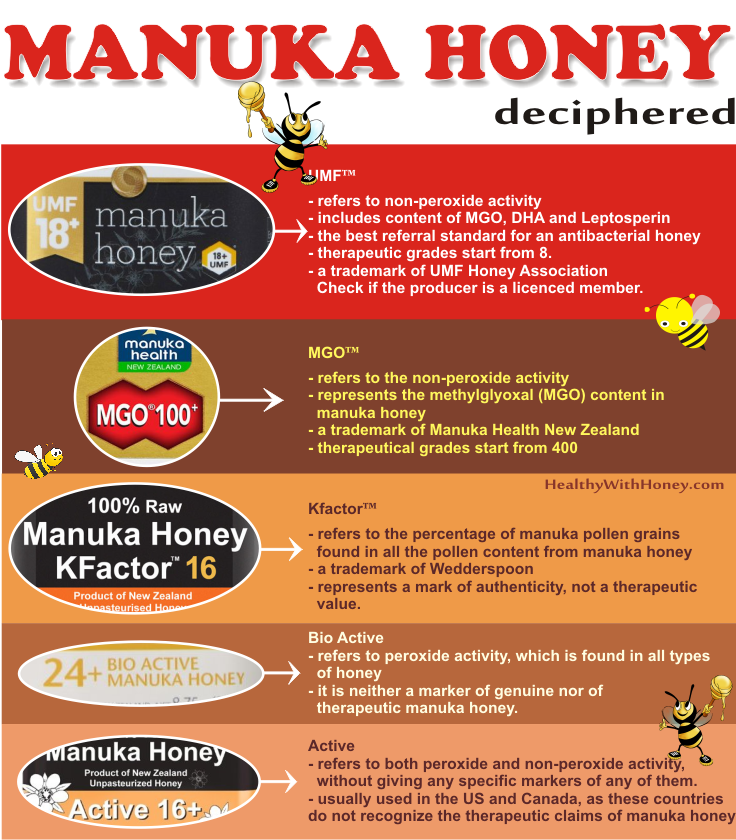Due to different policies genuine producers have graded manuka honey using different letters and numbers. I have already covered them in the article I want to buy manuka honey. What is UMF 16+, MGO 400+, Active? Here are some updates and clarifications:
A (Active) or TA (Total Activity) or BioActive
A or TA or BioActive based brands measure the hydrogen peroxide activity.
The associated numbers refer to naturally occurring peroxide activity levels, which are levels found in all types of honey (whether manuka, acacia, clover etc). They are also known to be unstable (decrease) with time, heat and light. A 'TA' honey cannot be compared to a genuine UMF certified jar.
It is simply of way of grading somehow the honey, to make it more valuable in the consumers' eyes. They are usually much cheaper.
ACTIVE is more used in USA and Canada. Food and Drug Administration or the Canadian Food Inspection Agency, do not support the medical claims covered by Unique Manuka Factor Association in New Zealand, and do not approve using their grades. The producers that use ACTIVE grade, followed by a number, take also into consideration some other factors that define a honey's quality: live enzymes, pollen count, chemical/residue analysis, antioxidant levels, the raw status or unpasteurisation process and various other phytochemical factors found in Manuka honey. In North America, Wedderspoon is considered a very good and reliable manuka honey producer.
MGO (methylglyoxal)
- A trademark of Manuka Health New Zealand, referring strictly to the amount of MGO (aka MG) found in it. Scientific evidence has confirmed methylglyoxal as one of the key compounds naturally occurring in New Zealand manuka honey. Some scientists considered MGO the main factor of all theantibacterial properties of honey. In 2016 Manuka Health celebrated 10 years since Thomas Henle and his team discovered the huge amounts of MGO in manuka honey and attributed its antibacterial properties to it. Compared to other honeys which can containg MGO from 0 to 5 mg/kg, manuka honey has 100 to even 800 mg/kg (more here: The celebration of manuka honey. Is MGO700 better than MGO300? Is manuka honey toxic?)
- - It's a quality system introduced in 2007
- - It ranges from MGO30 to MGO550 (30mg/kg to 550mg/kg)
- MGO30 (containing 30mg/kg) - table grade
- MGO100 (containing 100mg/kg) - table grade
- MGO250 (containing 250mg/kg) - table grade
- MGO400 (containing 400mg/kg) - antibacterial grade, suited for skin therapy.
- MGO550 (containing 550mg/kg) - high antibacterial grade, suited for skin therapy.
Not because of the producers, who are very strict and trustful, but because MGO quantity changes in time. What is written on the label is the amount of MGO found in honey at the time of testing and packing. According to Analytica Laboratories the content of MGO (MG) changes a lot in time, going from an initial 196 mg/kg to even 765 mg/kg after 8 months of storage at 27ºC.
Why does the MGO content increase? Because another component of manuka honey, DHA turns to MGO in time. Below there is a forecast of a sample of manuka honey, tested by Analytica Laboratories. MG stands for methylglyoxal, NPA stands for non-peroxide activity, HMF is Hydroxymethylfurfural, which is produced from the breakdown of sugar and it is used as an indicator of heat treatment and aging. Read more about all these indicators here.
KFACTOR (Key factors)
It's a trademark of Wedderspoon company. They have created KFactor, a holistic multi-stage authentication system named for the key factors inherent in the manuka honey, defining properties use to authenticate Manuka honey.
This grade DOES NOT stand for a therapeutic value, but for its authenticity as genuine monofloral manuka honey.
- KFactor12 - guarantees that there are 65% manuka pollen grains in all the pollen grains from the honey:
- KFactor16 - guarantees that there are 75% manuka pollen grains in all the pollen grains from the honey
- KFactor22 - guarantees that there are 90% manuka pollen grains in all the pollen grains from the honey
UMF (Unique Manuka Factor)
- A trademark in New Zealand, which insures purity and quality.
- It refers to the non-peroxide activity in honey that is compared to disinfectant phenol. It includes the quantity of MGO found, but also other key markers like Leptosperin and DHA. It makes the best referral standard for an antibacterial manuka honey. A total quality mark.
- It is the only international quality standard, with multiple laboratories around the world able to verify test results. It also offers an independent, internationally recognised verification program. The UK's own Food and Environmental Research Agency (FERA) can verify UMF labels.
- The numbers that follow UMF refer to the percentage of phenol in water. For example UMF12 equals a 12% solution of phenol in water.
- The numbers range from 10 to 25 (for therapeutic value) The higher the rating the more potent the honey.
UMF 5+ → shows lower levels of antibacterial activity, yet this manuka honey makes an excellent nutritional supplement.
UMF10+ → Low to medium level antibacterial activity, suitable for helping to maintain good health.
UMF15+ → High antibacterial activity
UMF20+ → Very high antibacterial properties.
The UMF mark is actually a registered trademark, invented to grade the honey abut also to protect the consumer that is getting a manuka honey that does actually contain the healing properties it is famous for.
Other simple numbers:
Other manuka honey jars display only numbers on their front label. No other letter. Practically they do not represent anything, we don't know if that honey comes from manuka or not, it has no mark of any trustful test done. Do not buy them.
How should we check a jar of manuka honey to see if it's genuine?
1. If you want to be 100% sure you purchased genuine UMF Manuka Honey, check the label for all following specifications:
- UMF trademark on the front label (ranging from UMF5+ to UMF20+)
- New Zealand producer's name
- producer's UMFHA license number
- batch number
UMFHA also recommends that manuka honey should be packed into jars and labelled in New Zealand.
Other companies based in New Zealand also produce genuine manuka honey, though they are not members of UMFHA.
2. Wedderspoon guaranties genuine manuka honey, though this doesn't say much about its antibacterial properties.
3. Manuka Health offers genuine manuka honey, we can easy recognize it from the MGO marker on the label.
UMF licensed Manuka Honey Producers:
On 24th of June 2016 there were 83 producers licensed (and accredited to display the UMF mark) under UMF Honey Association. I list them here:
(In time other producers will get their licence to be able to sell genuine manuka honey. The best way to be sure they are licensed is to check their name on the UMF Honey Association webpage.)
- · 100% Pure New Zealand Honey Limited (Licence # 1037)
- · Alpine Silk (Licence # 2045)
- · ApiHealth NZ Ltd (Licence # 1052)
- · Arataki Honey Limited (Hawkes Bay) (Licence # 1004)
- · Arataki Honey Limited (Rotorua) (Licence # 1003)
- · Aulando NZ Ltd (Licence # 2033)
- · Bee Nation (Licence # 2105)
- · BeeNZ Ltd (Licence # 2188)
- · BeePower International Pty Ltd (Licence # 2214)
- · Bees Inn Apiaries (Licence # 1040)
- · Beesonline Limited (Licence # 1026)
- · Cambridge Bee Products Limited (Licence # 1027) = (dist & sold by 'GOLDENHILLS MANUKA HONEY. We check to see if Trader Joe's is a fraud or not)
- · Cammell's Honey Limited (Licence # 1033)
- · Carina Brands International (NZ) (Licence # 1099)
- · Comvita New Zealand Limited (Licence # 1019)
- · Deep Blue Health (Licence # 2058)
- · GO Healthy New Zealand Ltd (Licence # 2020)
- · Golden Flow Apiaries Limited (Licence # 1038)
- · Good Health Products (Licence # 2208)
- · Haines Apiaries 2007 Limited (Licence # 1015)
- · Happy Valley Honey Ltd (Licence # 2024)
- · Honey and Herbs NZ Ltd (Licence # 2210)
- · Honey Droplet (Licence # 2029)
- · Honey Farm Pte Ltd (Licence # 2099)
- · Honey Forrest NZ Ltd (Licence # 1088)
- · Honey New Zealand (International) Ltd (Licence # 1043)
- · Icing International Ltd (Licence # 2041)
- · Iuvenum & Forma Ltd (Licence # 2017)
- · Kare Ltd (Licence # 2202)
- · Katikati Honey & Bee Centre Limited (Licence # 1025)
- · King Honey Health Products Ltd (Licence # 2037)
- · Kiva Health Food (Licence # 2240)
- · KiwiCorp Products Ltd (Licence # 2199)
- · Kiwi Farm (Licence # 1094)
- · Kiwigold Ltd (Licence # 1035)
- · Koha Natural Foods Ltd (Licence # 2206)
- · Lake View Honey Ltd (Licence # 2218)
- · Ling Hai Group Ltd (Licence # 2226)
- · LS Health Ltd (Licence # 2034)
- · Luvenum & Forma Ltd (Licence # 2017)
- · M5 Holdings trading as Whakaari International (Licence # 1042)
- · Manuka Bioactives Ltd (Licence # 2031)
- · Manukora (Licence #2228)
- · Melita Ltd (Licence # 2050)
- · Melora Limited (Licence # 2015)
- · Midlands Apiaries Ltd (Licence # 2888) = (dist & sold by Kiva Health Food)
- · Mitosis (Licence # 2242)
- · Mizland (Licence # 2039)
- · Mossops Honey New Zealand (Licence # 1021)
- · Natural Solutions Limited (Licence # 1024)
- · Nature's Secret Ltd (Licence # 2216)
- · New Zealand Health foods Ltd (Licence # 1053)
- · New Zealand Honey Ltd (Licence # 1051)
- · New Zealand Honey Specialties Ltd (Licence # 2060)· New Zealand Manuka Ltd (Licence # 1060) = Melora
- · New Zealand Natural Care Products Ltd (Licence # 2027)
- · North Valley Natural Health NZ Ltd (Licence # 2043)
- · Numerou New Zealand Company Ltd (Licence # 1096)
- · NZ Bees Ltd (Licence # 2212)
- · NZ Focus NZ Ltd (Licence # 1094)
- · NZ Health Naturally Ltd (Licence # 1045)
- · Oceania Food Company Ltd (Licence # 1091)
- · Oravida NZ Ltd (Licence # 2052)
- · PA & SC Steens Ltd (Licence # 2204)
- · Prolife Foods Ltd (Mother Earth) (Licence # 1027)
- · Pure Manuka Honey (Three Peaks) (Licence # 2112 )
- · Pure New Zealand International Ltd (Licence # 1069)
- · Red Seal Natural Health Ltd (Licence # 1055)
- · Savage Horticulture Ltd (Licence # 1075) = (dist & Wild Cape Honey)
- · Streamland Biological Technology Ltd (Licence # 2010)
- · SummerGlow Apiaries Limited (Licence # 1001)
- · Superbee Honey Factory (Licence # 2220)
- · Swift Health Food (Singapore) Pte Ltd (Licence # 1188)
- · S&N International Pte Ltd (Licence # 2088)
- · Tahi Estate Ltd (Licence # 2035) → Tahi Manuka Honey
- · Tai Tokerau Honey Ltd (Licence # 2110)
- · Taku Honey (Licence # 1098)
- · Taylor Pass Honey Co. (Licence # 2107)
- · The Honey Collection Limited (Licence # 1032)
- · Unibale NZ Ltd (Licence # 2150)
- · Vitaco Health NZ Ltd (Licence # 1072)
- · Vitamore Ltd (Licence # 2056)
- · Waitemata Honey Co Limited (Licence # 1014)
- · Wilderness Valley Ltd (Licence # 2232)
- · Yobees Honey Ltd (Licence # 2230)
Haddrells of Cambridge, http://haddrells.co.nz/, a private company, wholly owned by Richard and Moira Haddrell. Based in Cambridge, New Zealand, produce and export honey, bee pollen and propolis. It is UMFHA licensed no. 1027
Their distributors:
- Lifeplan Products Limited in the UK → 'GOLDENHILLS MANUKA HONEY' (http://www.haddrells.co.nz/product-goldenhills.html)
- Jna-net Japan in Japan
- Back to nature in Hong Kong → 'Manuka honey' (http://www.manukahoney.hk/)
- Thoroughbred Remedies Ireland Ltd in Ireland → 'Manuka honey'(https://www.triequestrian.ie/)
- Natures Farm in Singapore/ Malaysia → 'Haddrell's of Cambridge Manuka Honey' (http://www.naturesfarm.com/)
- Costco Wholesale Korea Ltd in Korea
Here comes the case of Trader Joe's. The jar has no clear pictures, no producer mentioned, no batch numer, only a license number, which is 1027, belonging to Haddrells of Cambridge.
The name of the distributor cannot be found among the other distributors listed on the producer's page, and neither is the number of this product.
Now, would you buy this manuka honey?
On Amazon we can find jars of manuka honey made by Haddrells, sold from all these distributors. BUT, the jars don't have clear pictures from all sides, their labels don't specify where was the honey bottled, which is the batch number and the UMF license number.
In this point we can immediately assume that the sellers have made similar jars, similar labels and filled them with something else. Since we lack all these info, I do not recommend buying this honey, though the producers may be fair and correct people.
Frauds
- In October 2011 FERA tested 5 brands of manuka honey sold in the UK. Only one showed the non-peroxide activity, specific to only manuka honey. From other 23 other manuka honeys, 11 also failed the non-peroxide tests. What does this mean? They were not manuka honey.
- In 2012 UMFHA tested 73 samples from Britain, China and Singapore. 41 of them had no non-peroxide activity. Other tests made in Hong Kong found that of 55 manuka honey samples 14 had been adulterated with syrup.
- On 25 August 2013 the Sunday Times reported examples of 3 products sold in the UK, which had a number on the jar, but no measure of the special non-peroxide or UMF activity was given. Preliminary scientific tests showed 'undetectable' levels.
From the brands tested:
- x - Pure Gold (different grades) → no NPA detected (was is it manuka honey?)
- x - Manuka Doctor (different grades)→ no NPA (non-peroxide activity) detected
- √ - Comvita 10+ → NPA 19
- √ - Rowse 10+ → NPA 11
- the typical annual New Zealand harvest is of 1,700 tons of manuka honey
- the annual consumption in the UK is of 1,800 tons of manuka honey
- the global consumption is estimated at 10,000 tons of manuka honey! How about that!
Analytica Laboratories can help us with that. Read more of what tests can be done to see the authenticity and therapeutic value of manuka honey here: How is manuka honey tested? Can we trust those tests?
Besides this, we have also good news on a device meant to identify fake manuka honey. See the video below.
Until then, trust the list of licensed producers from UMFHA. It's easier and safer.








While there is great merit to some natural antimicrobials, many, like manuka honey, have a lot of hype and fraud mixed in with the reality. It is also expensive and messy to use topically.
In my opinion, the latest medical silver technology far surpasses manuka honey in efficacy (300 independent studies), safety (25 studies). You might want to learn about it here: [Link]